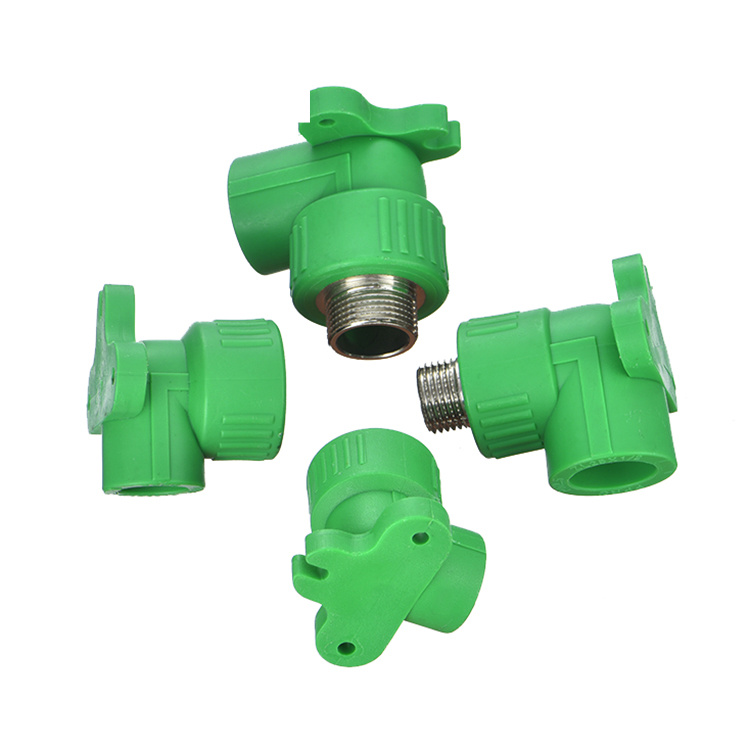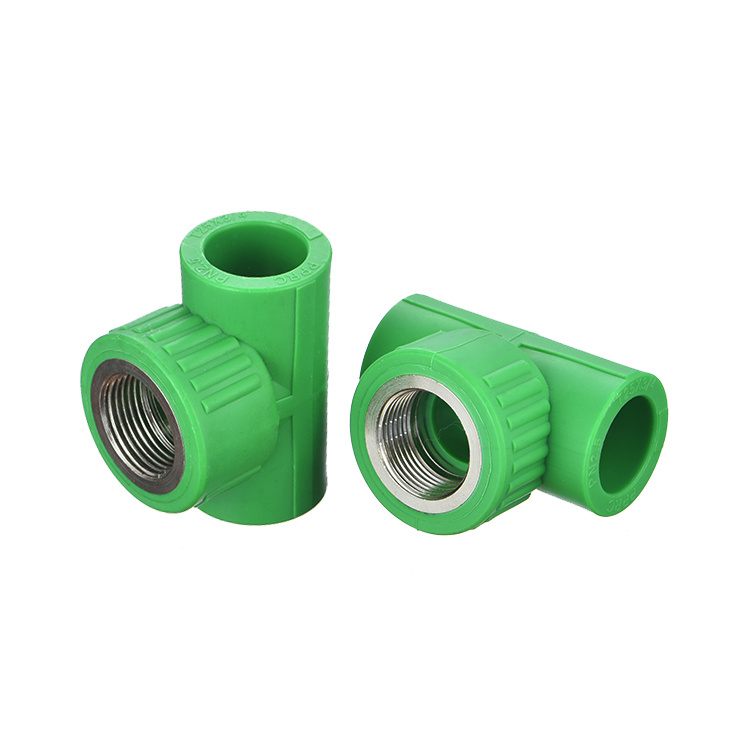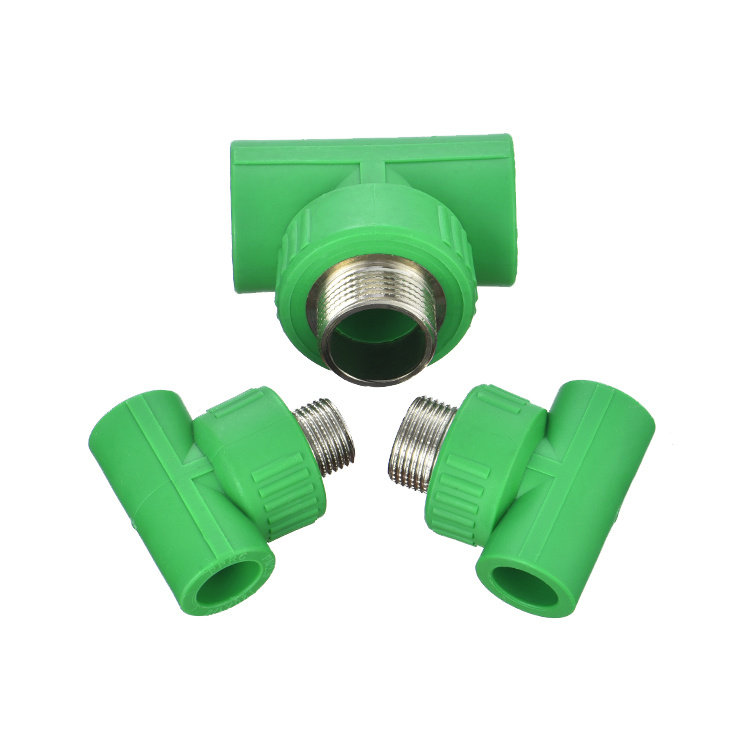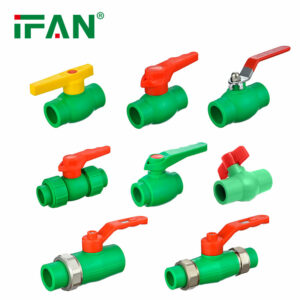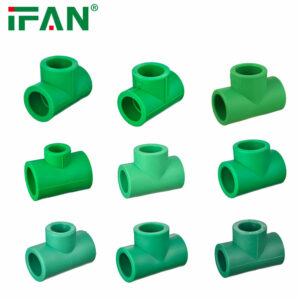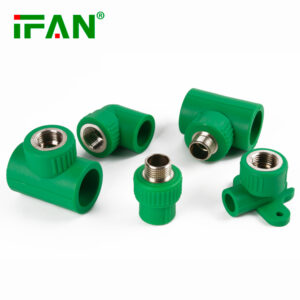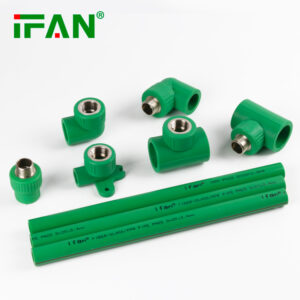Description
IFAN factory 30+ years manufacture experience support color /size customization support free sample.Welcome to consult for catalog and free samples.This is our Facebook Website:www.facebook.com,Click to watch IFAN’s product video.Compared with Tomex products, our IFAN products from quality to price are your best choice, welcome to buy!
Introduction
PPR fittings, or Polypropylene Random Copolymer fittings, are becoming increasingly popular in plumbing systems worldwide. These fittings are known for their durability, resistance to corrosion, and versatility. Whether you’re building a new plumbing system or renovating an old one, understanding PPR fittings is crucial. In this comprehensive guide, we will explore everything you need to know about PPR fittings, including their benefits, types, installation process, maintenance, and more.
What are PPR Fittings?
PPR fittings are components made from a type of plastic called polypropylene random copolymer (PPR). They are commonly used in plumbing systems to connect pipes and other plumbing elements. PPR fittings are designed to withstand high pressures and temperatures, making them ideal for both hot and cold water supply systems.
Unlike traditional materials such as copper or steel, PPR fittings are lightweight, cost-effective, and offer significant advantages in terms of resistance to scaling and corrosion. This makes them a preferred choice for both residential and commercial plumbing applications.
Benefits of PPR Fittings
1. Durability and Longevity
One of the standout features of PPR fittings is their long lifespan. These fittings are designed to last for decades without deteriorating, thanks to their resistance to chemical corrosion and scaling. PPR fittings also have a high tolerance for extreme temperatures, making them suitable for both hot and cold water systems.
2. Cost-Effectiveness
PPR fittings are an affordable alternative to traditional metal fittings. Their low cost, combined with their durability, makes them an attractive option for budget-conscious projects. Additionally, the ease of installation reduces labor costs.
3. Corrosion Resistance
Unlike metal fittings, which can corrode over time, PPR fittings are highly resistant to rust and corrosion. This is especially important in water supply systems, where corrosion can lead to leaks, blockages, and water contamination.
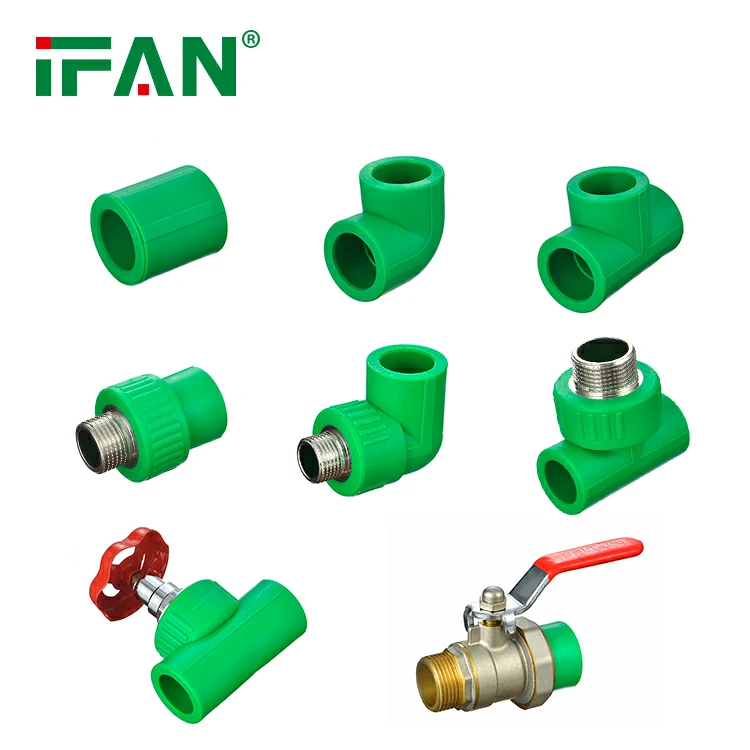
4. Leak-Proof Connections
PPR fittings form tight, secure connections that are resistant to leaks. The joining process typically involves welding or fusion, which results in a seamless bond between pipes and fittings. This leak-proof feature is vital for ensuring the integrity and efficiency of your plumbing system.
5. Environmentally Friendly
PPR fittings are made from recyclable materials, making them a more environmentally friendly option compared to metal or PVC fittings. They also have a lower carbon footprint during production.
Types of PPR Fittings
PPR fittings come in a variety of types, each designed for specific purposes. The most common types include:
1. Elbow Fittings
Elbow fittings are used to change the direction of a plumbing system. They come in various angles, typically 45° and 90°, to accommodate different layout requirements.
2. Tee Fittings
Tee fittings are used to connect three pipes together, creating a “T” shape. They are commonly used in situations where a branch pipe is needed from the main line.
3. Union Fittings
Union fittings allow for easy disconnection and reconnection of pipes. They are often used in areas where maintenance or repairs might be required in the future.
4. Couplings
Couplings are used to join two pipes of the same diameter. They are essential for extending a pipeline or connecting sections of pipe together.
5. educer Fittings
Reducer fittings are used to connect pipes of different sizes. This helps ensure the proper flow of water through the plumbing system and reduces the risk of blockages or inefficiency.
How to Install PPR Fittings
Installing PPR fittings is a relatively straightforward process, but it requires careful attention to detail. Here’s a step-by-step guide to installing PPR fittings:
Step 1: Measure and Cut the Pipes
The first step is to measure and cut the PPR pipes to the desired length. Use a pipe cutter for clean and accurate cuts.
Step 2: Prepare the Fittings
Before joining the pipes, clean the ends of both the pipe and the fitting to remove any dirt or debris. This ensures a tight, secure bond.
Step 3: Heat the Fitting
PPR fittings are typically joined using a process called heat fusion. Use a heating tool to heat the ends of both the pipe and the fitting. The fitting should be heated until it becomes slightly soft and pliable.
Step 4: Join the Pipe and Fitting
Quickly insert the heated pipe end into the fitting, ensuring they are aligned properly. Hold the connection for a few seconds until it cools and solidifies.
Step 5: Test the Connection
Once the connection has cooled, test it by turning on the water supply. Check for any leaks and ensure the fitting is secure.
Maintaining PPR Fittings
Maintaining PPR fittings is relatively easy due to their resistance to corrosion and scaling. However, regular maintenance can help extend their lifespan. Here are some simple tips for maintaining PPR fittings:
1. Inspect Regularly
Regularly check your plumbing system for any visible signs of wear or damage. Although PPR fittings are durable, it’s always best to catch potential issues early.
2. Avoid Chemical Damage
PPR fittings are resistant to most chemicals, but certain harsh substances can still cause damage. Avoid exposing PPR fittings to strong acids or solvents.
3. Protect from UV Exposure
PPR fittings should be protected from prolonged exposure to ultraviolet (UV) rays, as this can weaken the material over time. When installing PPR fittings outdoors, make sure they are shielded from direct sunlight.
4. Ensure Proper Pressure Levels
Excessive pressure can cause stress on the fittings and lead to leaks or failures. Make sure your plumbing system is designed to handle the appropriate pressure for PPR fittings.
Conclusion
PPR fittings are an excellent choice for both residential and commercial plumbing systems. With their durability, cost-effectiveness, and ease of installation, PPR fittings offer a reliable and long-lasting solution for your plumbing needs. By following proper installation and maintenance procedures, you can ensure that your plumbing system operates efficiently for years to come.
Frequently Asked Questions (FAQs)
1. What are PPR fittings made of?
PPR fittings are made from polypropylene random copolymer (PPR), a durable plastic that is resistant to corrosion, scaling, and extreme temperatures.
2. Are PPR fittings suitable for both hot and cold water systems?
Yes, PPR fittings are designed to handle both hot and cold water, making them versatile for a variety of plumbing applications.
3. How long do PPR fittings last?
PPR fittings are highly durable and can last for decades when properly installed and maintained, typically ranging between 50 to 100 years.
4. Can PPR fittings be used outdoors?
While PPR fittings can be used outdoors, they should be protected from prolonged exposure to UV rays, which can degrade the material over time.
5. What is the installation process for PPR fittings?
PPR fittings are installed using heat fusion, where both the pipe and fitting are heated, joined together, and allowed to cool to create a strong, leak-proof connection.
This article is designed to provide a comprehensive understanding of PPR fittings, offering insights into their benefits, installation process, and maintenance, all while optimizing for SEO.
Related products
-
PPR Fittings
Green Plastic PPR Material Fittings


